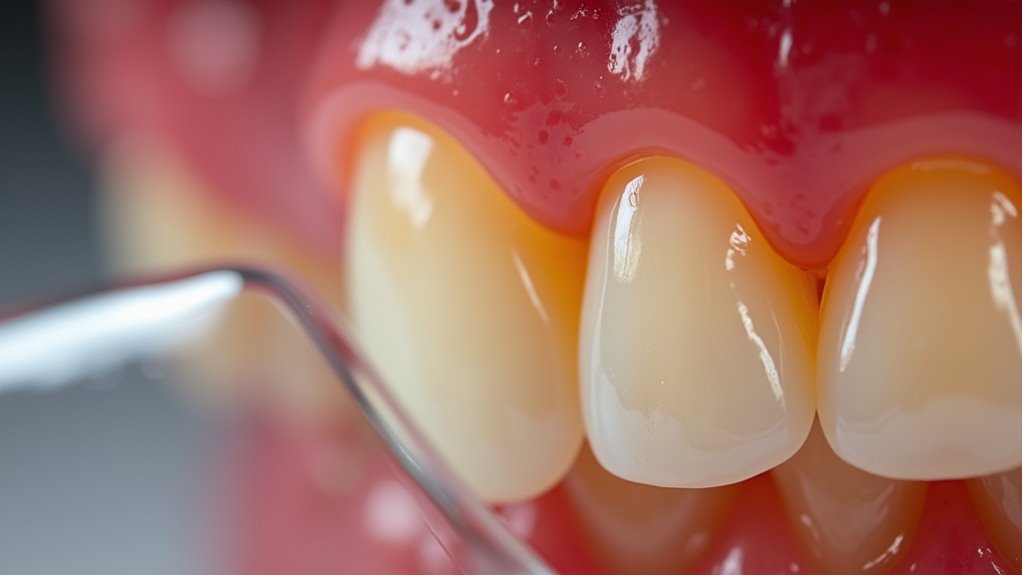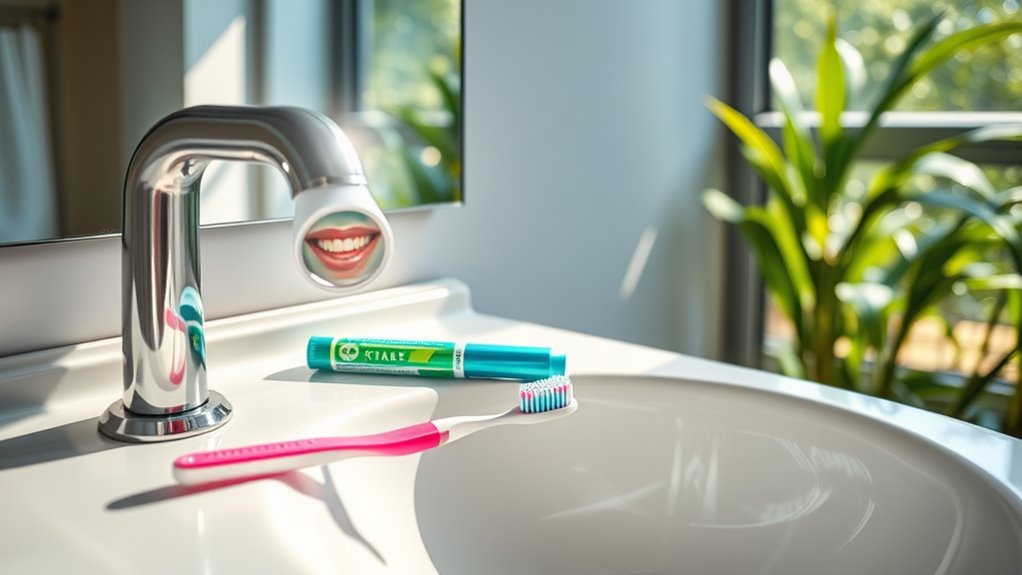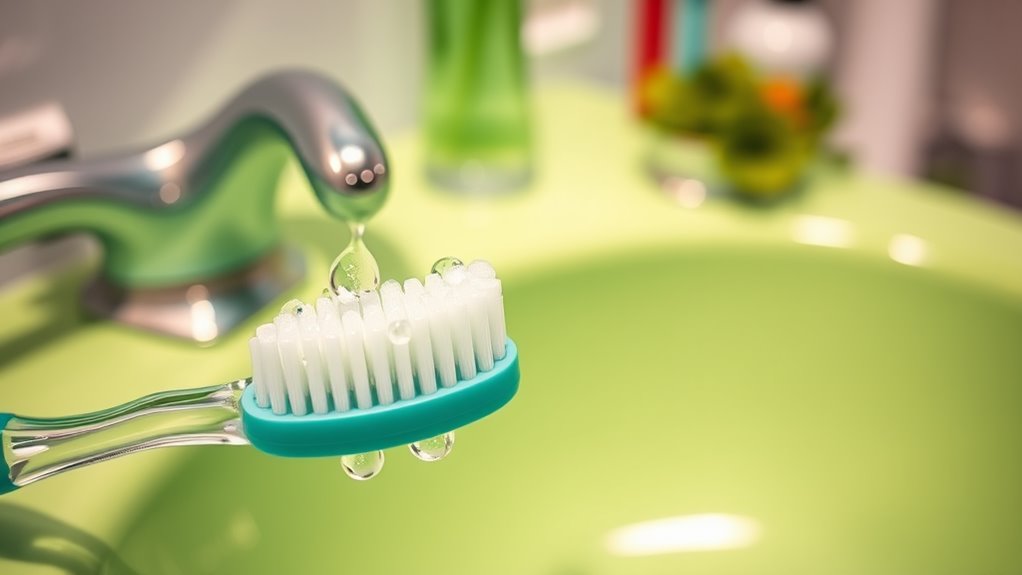The #1 Reason Your Gums Are Receding (and How to Stop It!)
If you’ve noticed your teeth looking longer or feeling more sensitive lately, aggressive brushing might be the culprit behind your receding gums. While you’re trying to maintain good oral hygiene, you could actually be causing damage to your delicate gum tissue. The good news? This common problem has a simple solution that can protect your smile and prevent further gum recession – and it starts with changing how you brush.
Understanding Gum Recession and Its Impact on Oral Health
When your gums begin to pull away from your teeth, exposing more of the tooth surface and root, you’re experiencing gum recession. This common dental condition affects millions of people, often progressing so gradually that you mightn’t notice it until significant damage has occurred.
The primary gum recession cause isn’t just aging – it’s a combination of factors that can strike at any age. Your exposed tooth roots become vulnerable to decay, sensitivity, and infection. Without the protective coverage of healthy gums, you’ll experience increased sensitivity to hot and cold temperatures, and your teeth may appear longer than normal.
If left untreated, receding gums can lead to tooth mobility and eventual tooth loss. You’ll also face a higher risk of developing periodontal disease, which can impact your overall health. Additionally, teeth grinding can exert excessive pressure on your gums, contributing to recession over time.
Understanding these consequences is crucial because early detection and intervention can prevent severe complications and protect your smile.
The Truth About Aggressive Brushing and Gum Damage
While many people believe vigorous brushing leads to cleaner teeth, aggressive tooth-brushing techniques actually cause significant damage to your gums. When you brush too hard, you’re wearing away the protective gum tissue and exposing sensitive tooth roots, leading to recession that can’t be reversed naturally.
You’ll notice the signs of aggressive brushing through worn-down toothbrush bristles, bleeding gums, and increased tooth sensitivity. Early detection of gum issues is essential to prevent further damage, so be vigilant about any changes in your oral health.
To protect your gums, switch to a soft-bristled toothbrush and adopt a gentle, circular brushing motion. Hold your toothbrush at a 45-degree angle to your gum line, and let the bristles do the work – not your arm strength.
Consider upgrading to an electric toothbrush with pressure sensors that alert you when you’re applying too much force. This innovative technology helps you maintain proper brushing technique and prevents inadvertent damage to your gum tissue.
Proper Brushing Techniques to Protect Your Gums
To maintain healthy gums and prevent recession, proper brushing technique starts with positioning your toothbrush at the correct angle. Hold your brush at 45 degrees against the gumline and use gentle, circular motions rather than aggressive back-and-forth sawing. Apply light pressure – just enough to feel the bristles against your gums without causing discomfort.
Upgrade your brushing strategy by dividing your mouth into quadrants, spending 30 seconds on each section. Start at the outer surfaces, then move to the inner surfaces, and finally tackle the chewing surfaces.
Don’t forget to clean along the gumline where bacteria often accumulate. Use a soft-bristled toothbrush and replace it every three months or sooner if the bristles become frayed. For optimal results, incorporate smart technology like pressure-sensing electric toothbrushes that alert you when you’re brushing too hard. These innovative tools can help you develop better habits and protect your gums long-term. Additionally, proper technique can elevate your dental care routine and further enhance gum health.
Essential Tools for Gentle Yet Effective Oral Care
Selecting the right oral care tools makes a significant difference in protecting your gums from recession.
You’ll want to upgrade your dental arsenal with innovative products specifically designed for gum protection while maintaining effective cleaning power.
Your essential toolkit should include:
-
An electric toothbrush with pressure sensors and multiple cleaning modes – opt for one that alerts you when you’re brushing too hard and offers specialized gum care settings.
-
Ultra-soft bristled brush heads with tapered tips that can reach beneath the gum line without causing trauma – look for ones with bristles that change color to indicate replacement time.
-
A water flosser with adjustable pressure settings – these devices use pulsating water to clean between teeth and massage gums, proving gentler than traditional string floss.
Additionally, be mindful that worn-out bristles can lead to missed spots and potential gum issues, emphasizing the importance of regular replacements.
Don’t forget to replace these tools regularly: brush heads every three months, and check water flosser tips for wear quarterly to maintain optimal performance.
Daily Habits That Support Healthy Gums
Beyond having the right tools, maintaining healthy gums requires consistent daily habits that protect against recession. Start by timing your brushing sessions to ensure you’re spending at least two minutes twice daily, focusing on the gum line with a 45-degree angle.
Don’t rush through flossing – take time to curve the floss around each tooth in a C-shape. Incorporate a soft-bristled electric toothbrush with pressure sensors to prevent aggressive scrubbing.
After meals, rinse with water or an alcohol-free mouthwash to neutralize acids and remove food particles. Consider oil pulling with coconut oil for 10-15 minutes before brushing in the morning.
Stay hydrated throughout the day to maintain optimal saliva production, and boost your vitamin C intake through citrus fruits or supplements. Good oral hygiene is essential in preventing gum disease and maintaining overall gum health.
If you notice any sensitivity or bleeding, adjust your technique immediately rather than waiting for symptoms to worsen.




